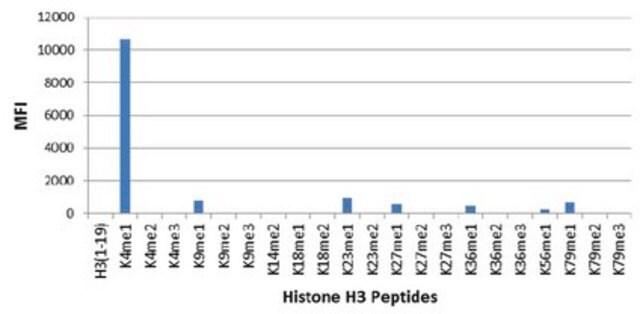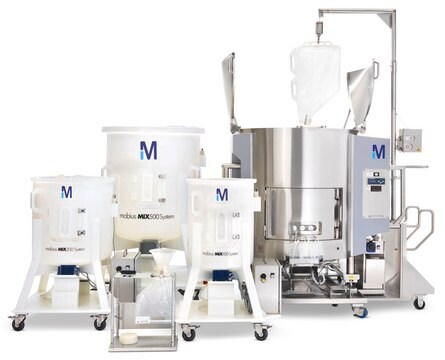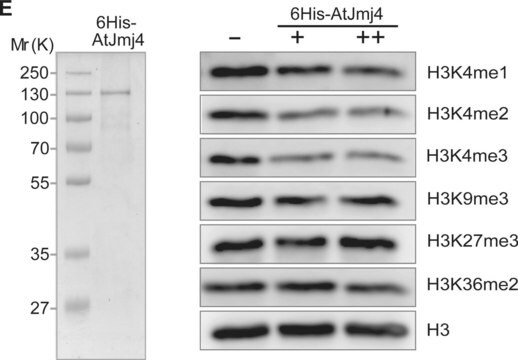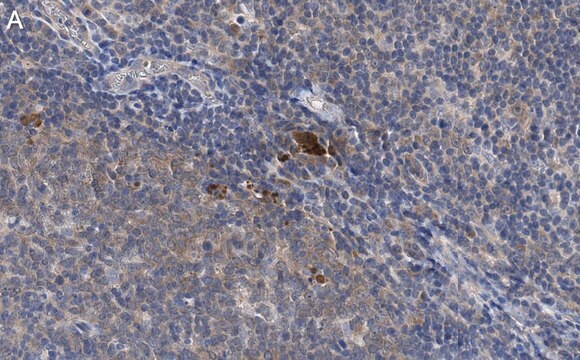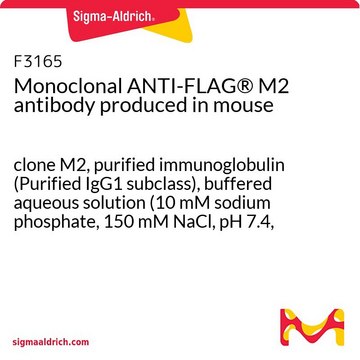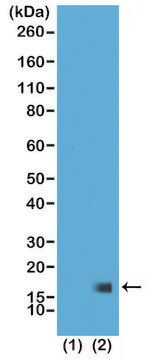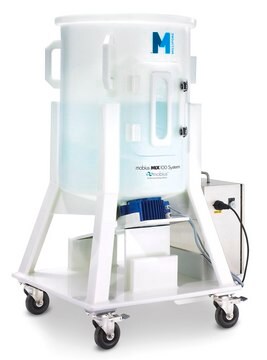MABE986
Anti-PTB Antibody, clone BB7
clone Bb7, from mouse
Sinónimos:
Polypyrimidine tract-binding protein 1, PTB, 57 kDa RNA-binding protein PPTB-1, Heterogeneous nuclear ribonucleoprotein I, hnRNP I, PTB
About This Item
Productos recomendados
origen biológico
mouse
Nivel de calidad
forma del anticuerpo
purified antibody
tipo de anticuerpo
primary antibodies
clon
Bb7, monoclonal
reactividad de especies
mouse, human
técnicas
immunocytochemistry: suitable
immunoprecipitation (IP): suitable
western blot: suitable
isotipo
IgG2bκ
Nº de acceso NCBI
Nº de acceso UniProt
Condiciones de envío
wet ice
modificación del objetivo postraduccional
unmodified
Información sobre el gen
human ... PTBP1(5725)
Descripción general
Inmunógeno
Aplicación
Epigenetics & Nuclear Function
Nuclear Receptors
Immunocytochemistry Analysis: A 1:500 dilution of this antibody detected PTB in HeLa, HUVEC, and NIH/3T3 cells.
Immunoprecipitation Analysis: A representative lot immunoprecipitated PTB in HeLa and WERI-1 nuclear extracts. (Chou, M.Y., et al. (2000). Mol Cell. 5(6):949-57).
Western Blotting Analysis: A representative lot detected PTB in HeLa and WERI-1 nuclear extracts (Sharma, S., et al. (2005). Mol Cell. 19(4):485-496).
Calidad
Western Blotting Analysis: 1.0 µg/mL of this antibody detected PTB in 10 µg of HeLa cell lysate.
Descripción de destino
Forma física
Almacenamiento y estabilidad
Otras notas
Cláusula de descargo de responsabilidad
¿No encuentra el producto adecuado?
Pruebe nuestro Herramienta de selección de productos.
Código de clase de almacenamiento
12 - Non Combustible Liquids
Clase de riesgo para el agua (WGK)
WGK 1
Punto de inflamabilidad (°F)
Not applicable
Punto de inflamabilidad (°C)
Not applicable
Certificados de análisis (COA)
Busque Certificados de análisis (COA) introduciendo el número de lote del producto. Los números de lote se encuentran en la etiqueta del producto después de las palabras «Lot» o «Batch»
¿Ya tiene este producto?
Encuentre la documentación para los productos que ha comprado recientemente en la Biblioteca de documentos.
Nuestro equipo de científicos tiene experiencia en todas las áreas de investigación: Ciencias de la vida, Ciencia de los materiales, Síntesis química, Cromatografía, Analítica y muchas otras.
Póngase en contacto con el Servicio técnico